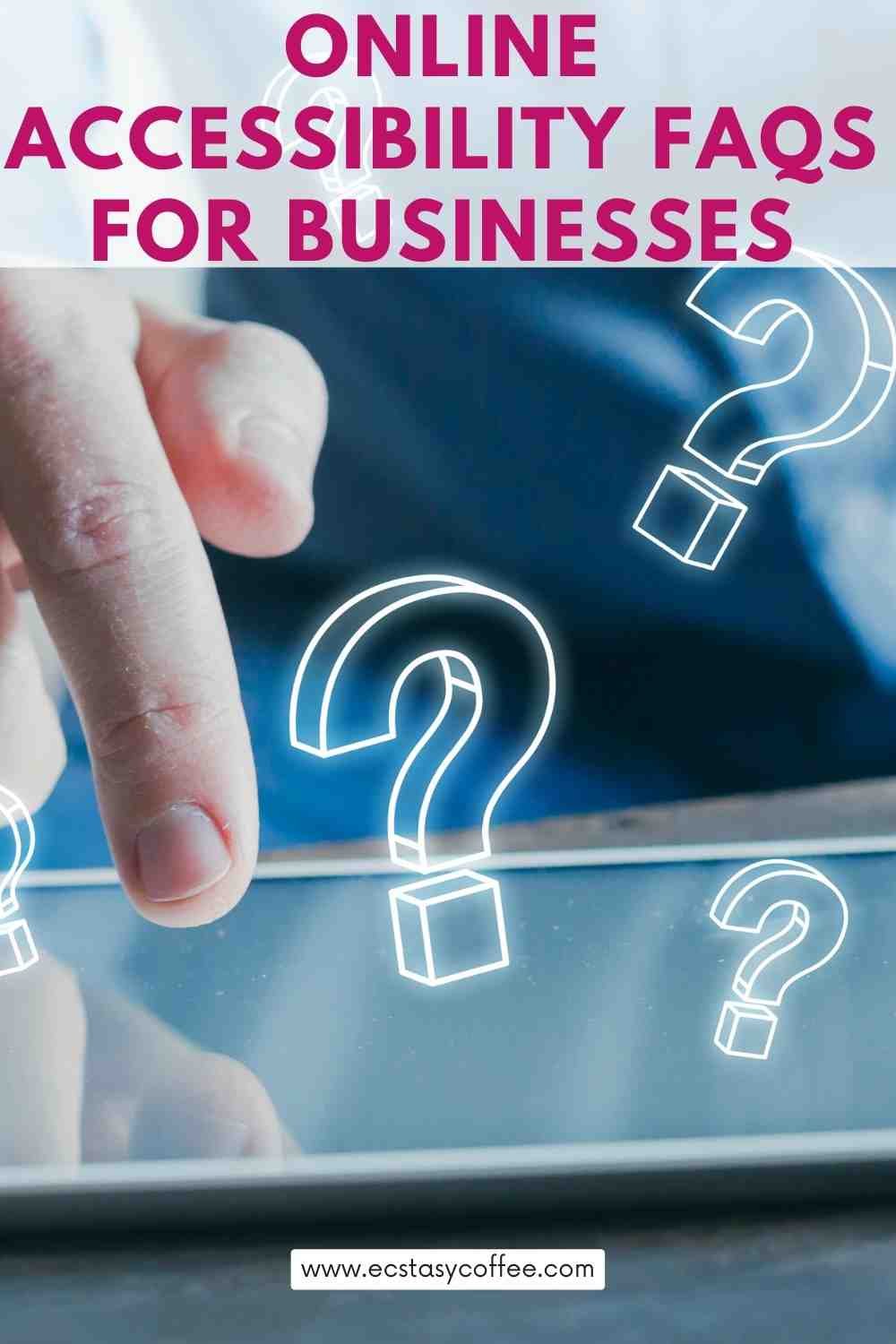Online accessibility has become imperative for businesses and organizations that wish to create inclusive user experiences, so understanding both its importance and how best to implement appropriate techniques has become paramount. This blog post will address frequently asked questions (FAQs) so you can ensure your website is accessible, from understanding which disabilities require accommodations to understanding how ADA Title III affects websites. Here, you will gain all the knowledge necessary for best practices when it comes to online accessibility practices.

What is online accessibility?
As digitalization increases, online accessibility has become ever more crucial to businesses and organizations. Online accessibility refers to designing websites and online services that can be utilized by all people, including those living with disabilities, with ease. Accessibility means making digital content available and accessible for anyone regardless of their abilities, giving businesses an opportunity to reach a wider audience while increasing customer satisfaction.
Considerations of online accessibility also help companies avoid potential legal issues related to discrimination, while simultaneously aligning with ethical and moral values, thus improving brand reputation and creating a more inclusive society.
What changes can businesses implement?
As businesses increasingly rely on online platforms to reach their target audiences, it's imperative that all customers can easily access their websites with no issues. Companies can make changes that increase website accessibility, such as providing alternative text for images, captioning videos and audio describing podcasts/webinars, as well as having clear layouts and using readable fonts that enhance user experiences for people with visual impairments, cognitive disabilities, or motor impairments. Overall, making these adjustments will not only make websites more inclusive but will help businesses create a diverse customer base.
How can businesses assess accessibility?
Today, having an accessible website is essential to businesses. Yet, testing its accessibility can be a challenging endeavor. One method to test the accessibility of a website is using an accessibility checker. These tools scan websites and identify issues such as color contrast, heading structure, and keyboard navigation.
Another strategy involves conducting user testing by recruiting individuals with disabilities who will test out your site and give feedback. By recruiting these testers as users, you will gain invaluable insights on improving website accessibility, which in turn will lead to a more inclusive and diverse online presence.
Role of technology in providing online accessibility
With technology becoming an ever-increasing part of daily life, ensuring online accessibility for everyone has become an increasingly pressing matter. Digital space has become an essential platform for communication, business transactions, and entertainment purposes. Therefore, technology must allow all people equal access to its benefits. Thanks to recent advancements, however, people with disabilities are finding greater participation online compared to ever before, thanks to screen readers, voice recognition software, and specialized input devices, which break down accessibility barriers for success and create equal opportunity spaces online.
As an example, you can find accessibility plugins to aid compliance, such as Accessibe (a WordPress plugin that aids ADA compliance) and UserWay (an accessibility widget that gives users alternative ways of accessing content). Furthermore, several companies have taken strides toward developing technologies specifically tailored for disabled communities like Microsoft's Xbox Adaptive Controller and Apple's VoiceOver Screenreader that improve access for those living with physical disabilities.
Tips on making content accessible
Content that is accessible to everyone is key to providing equal opportunities to all individuals. Making content accessible for people with disabilities involves several simple strategies. These may include using descriptive alt text for images with visual impairments, closed captioning for videos to assist those who are deaf or hard of hearing and making sure your website works with screen reader software. These small changes can have a huge impact on the accessibility of your content and allow everyone involved to fully participate and engage with it.
Read also:

Leave a Reply